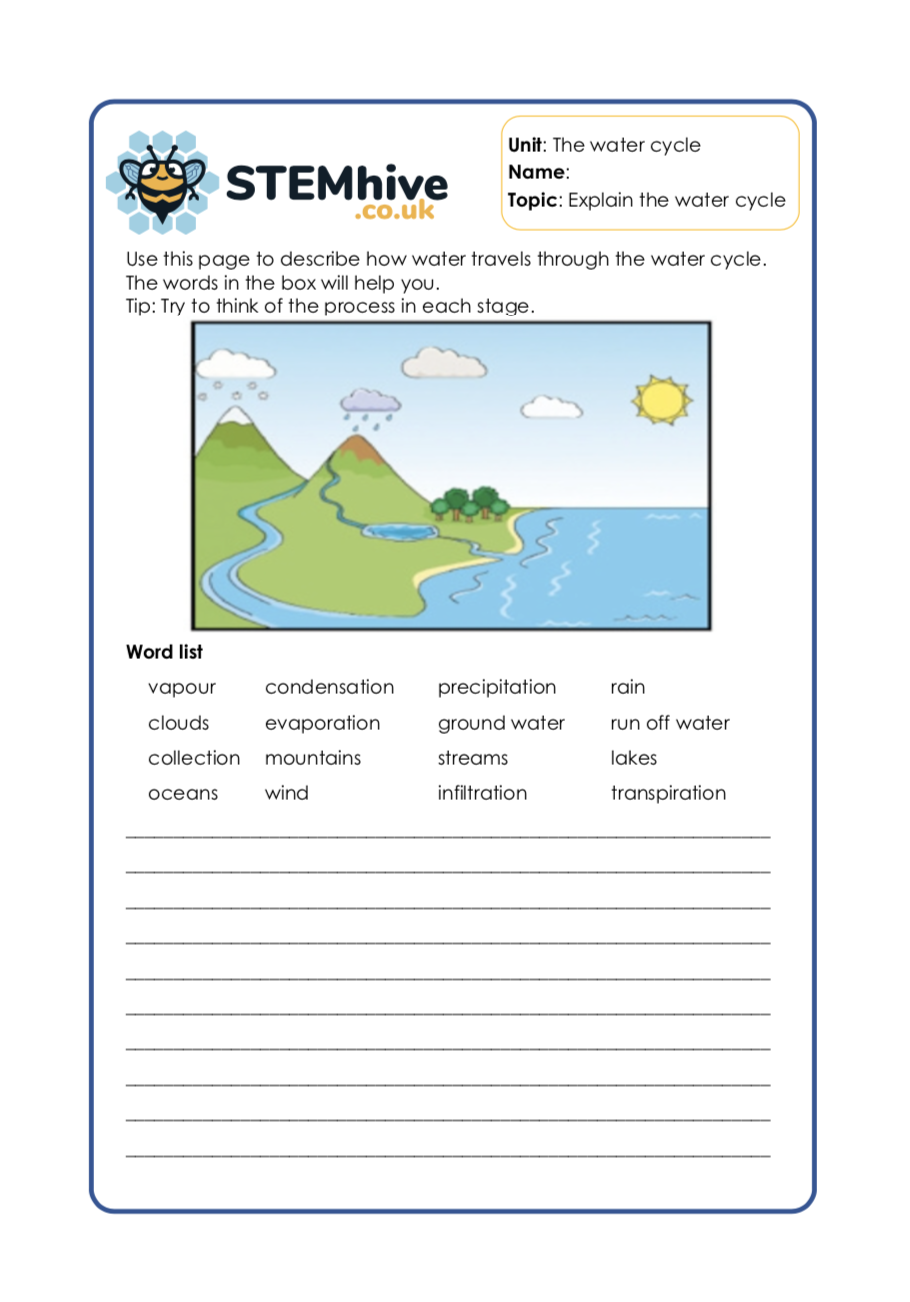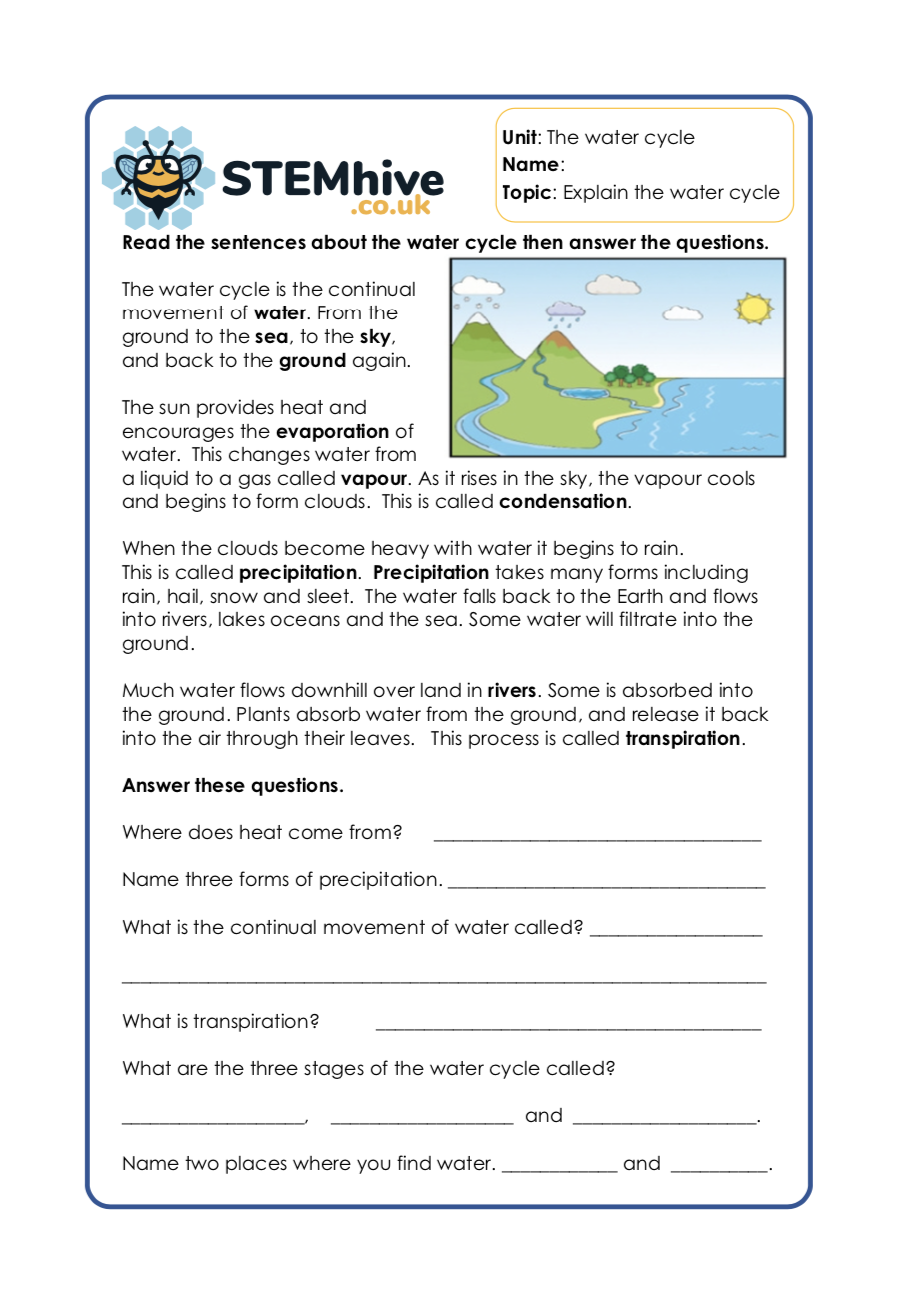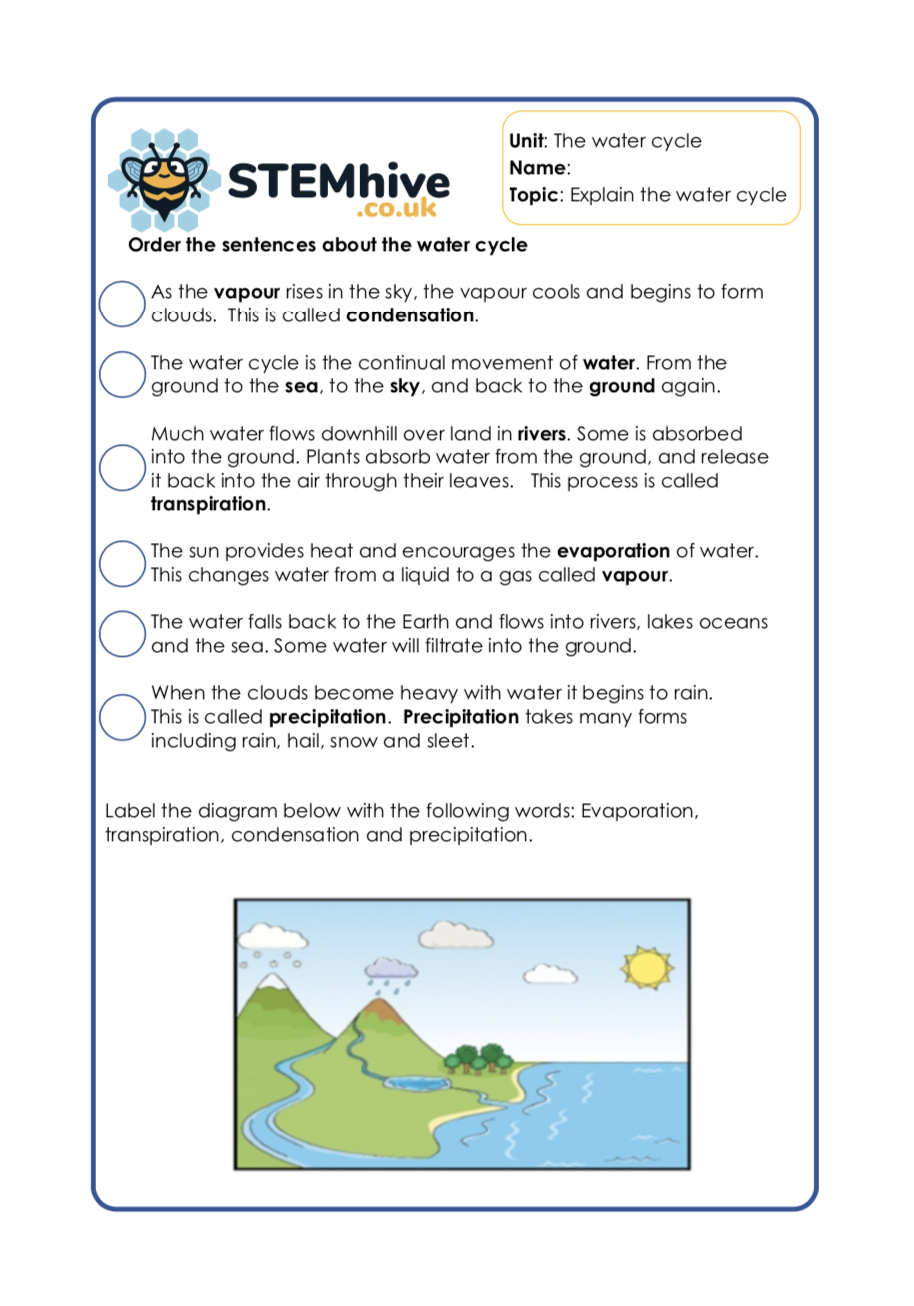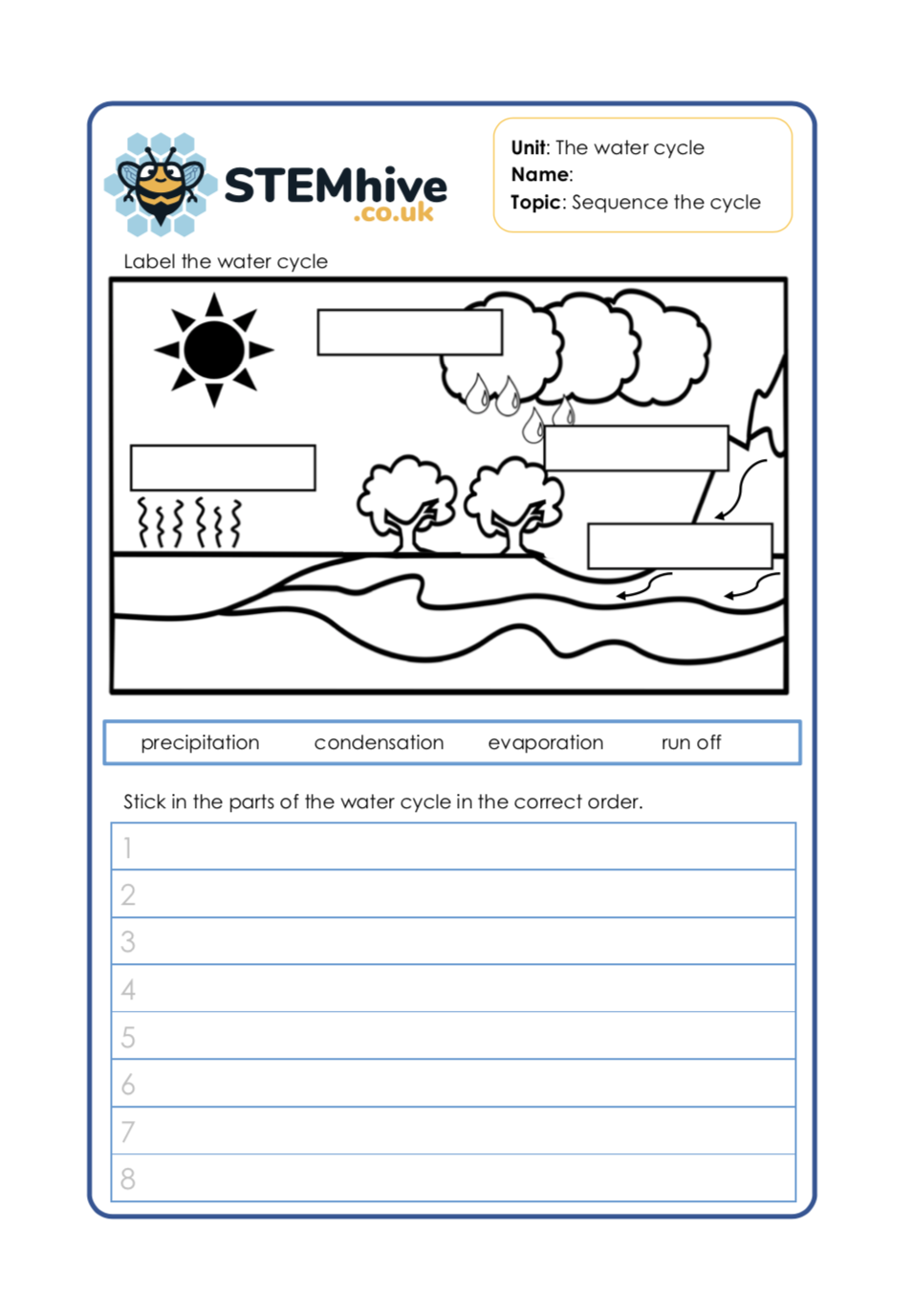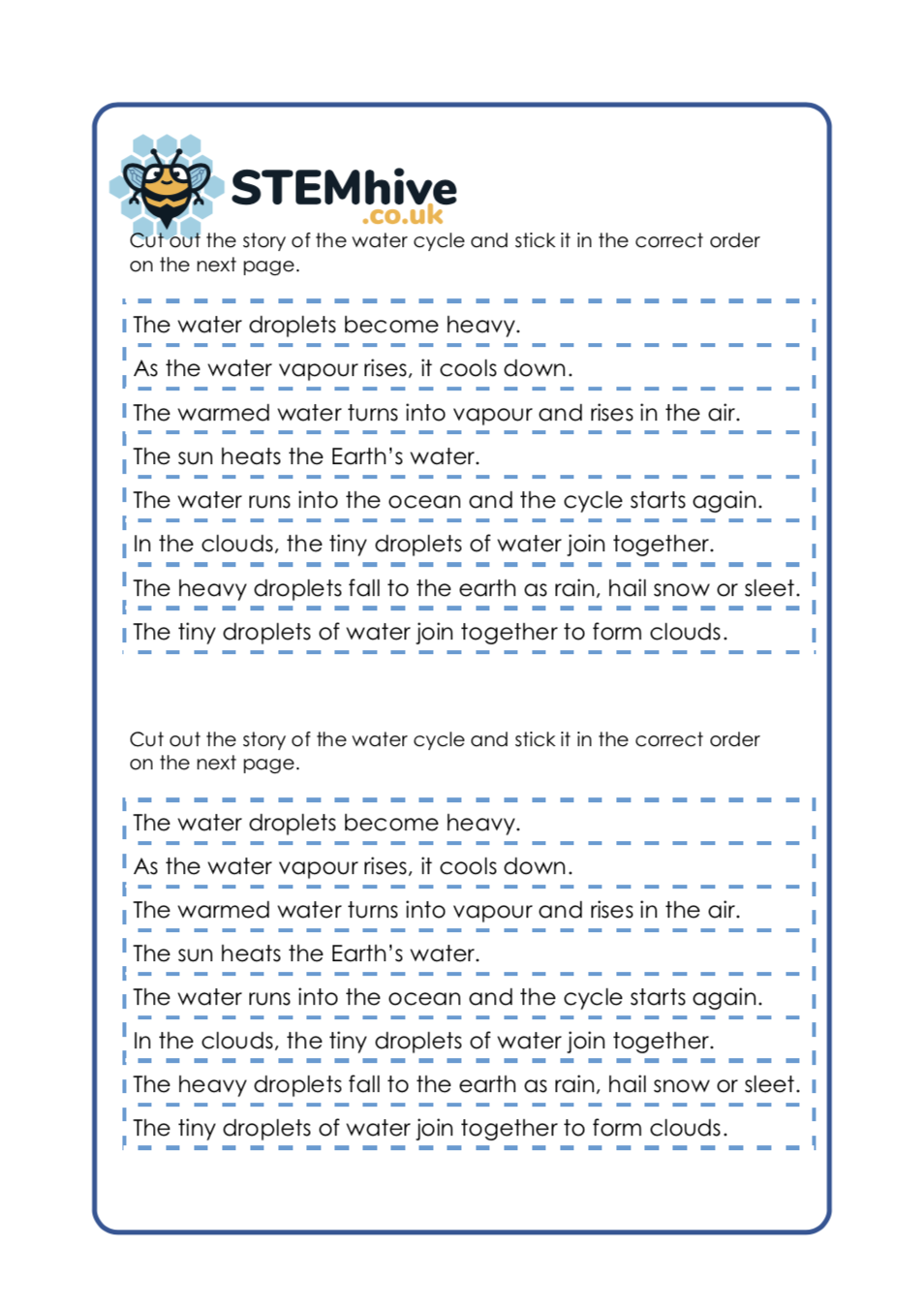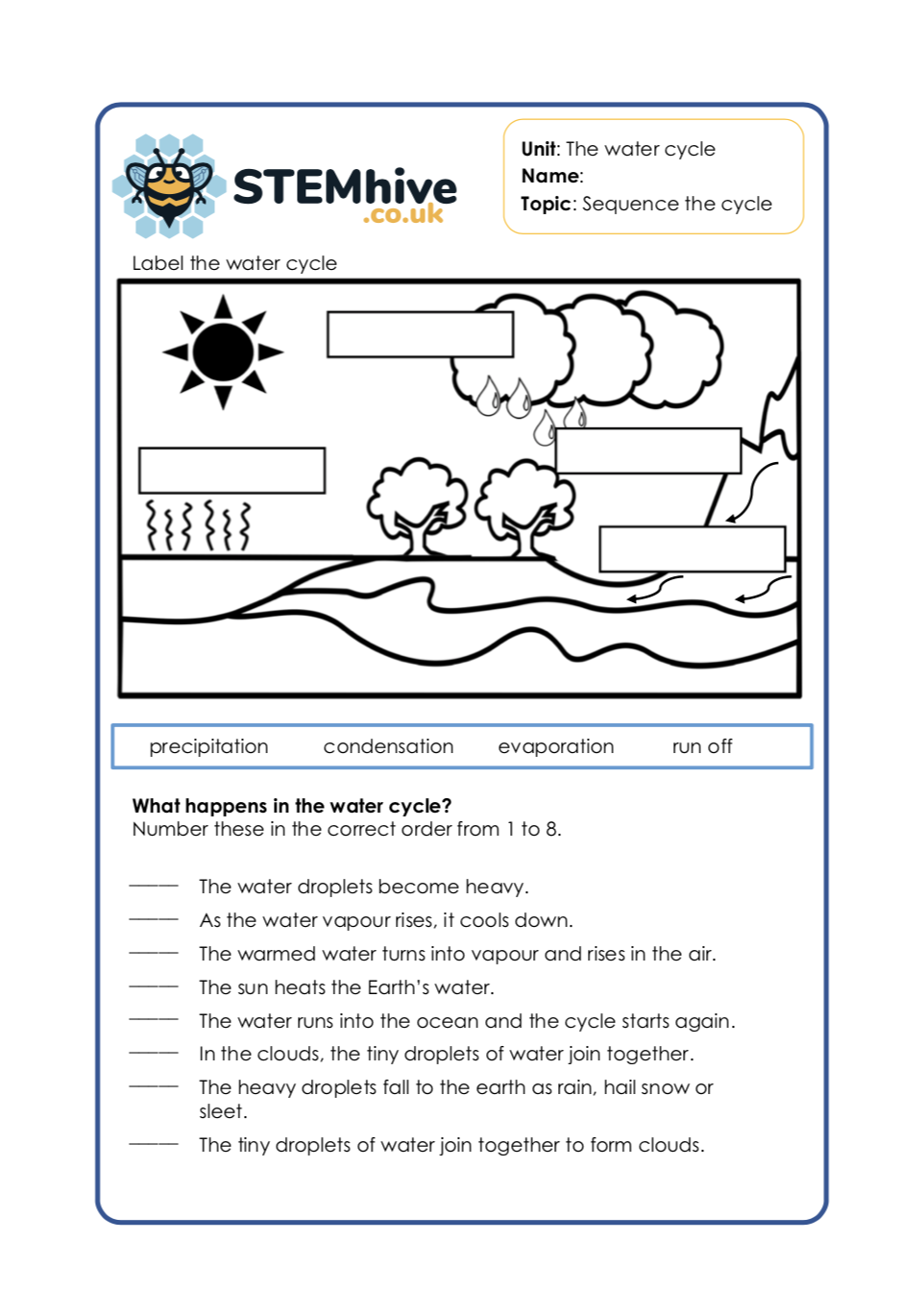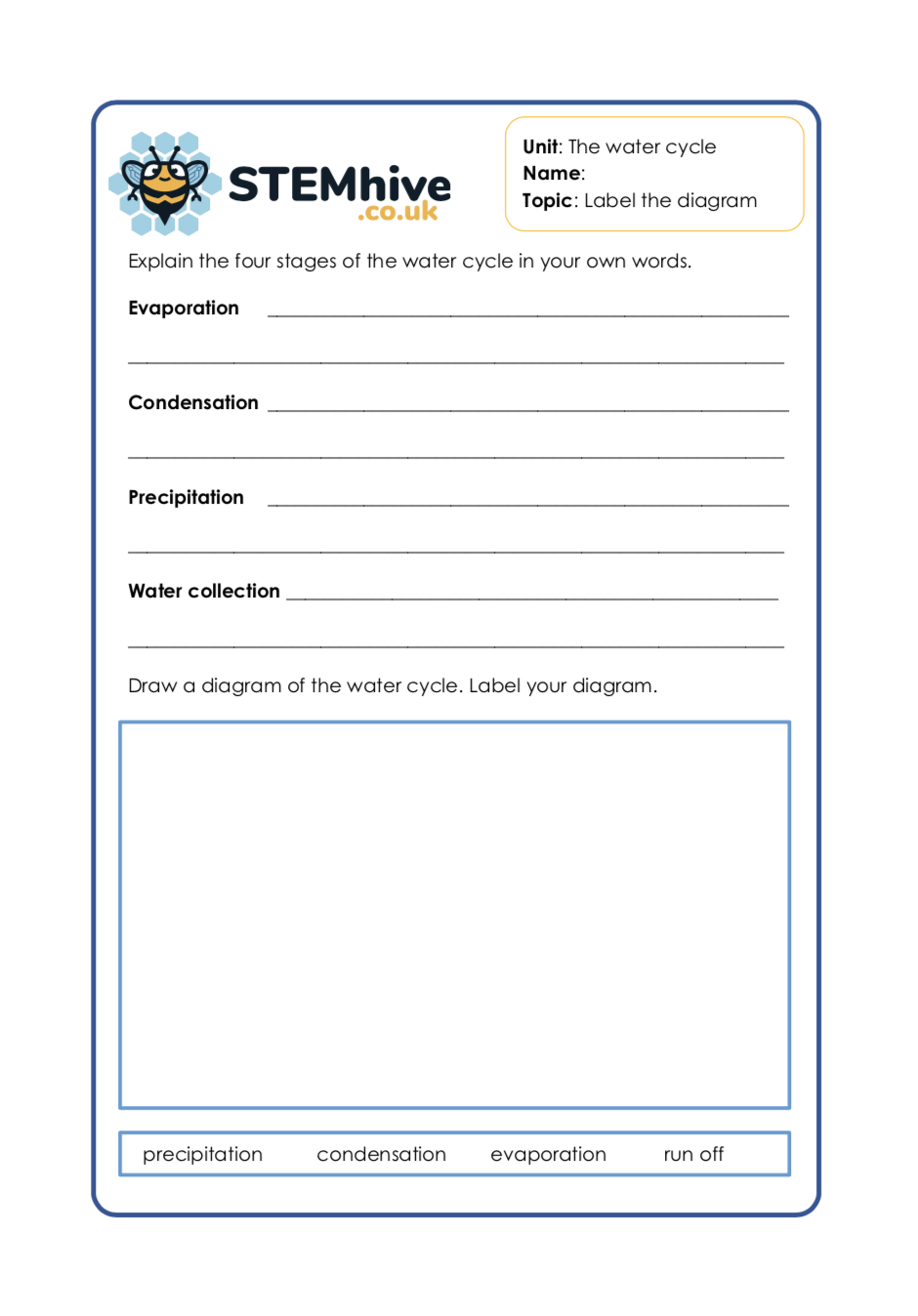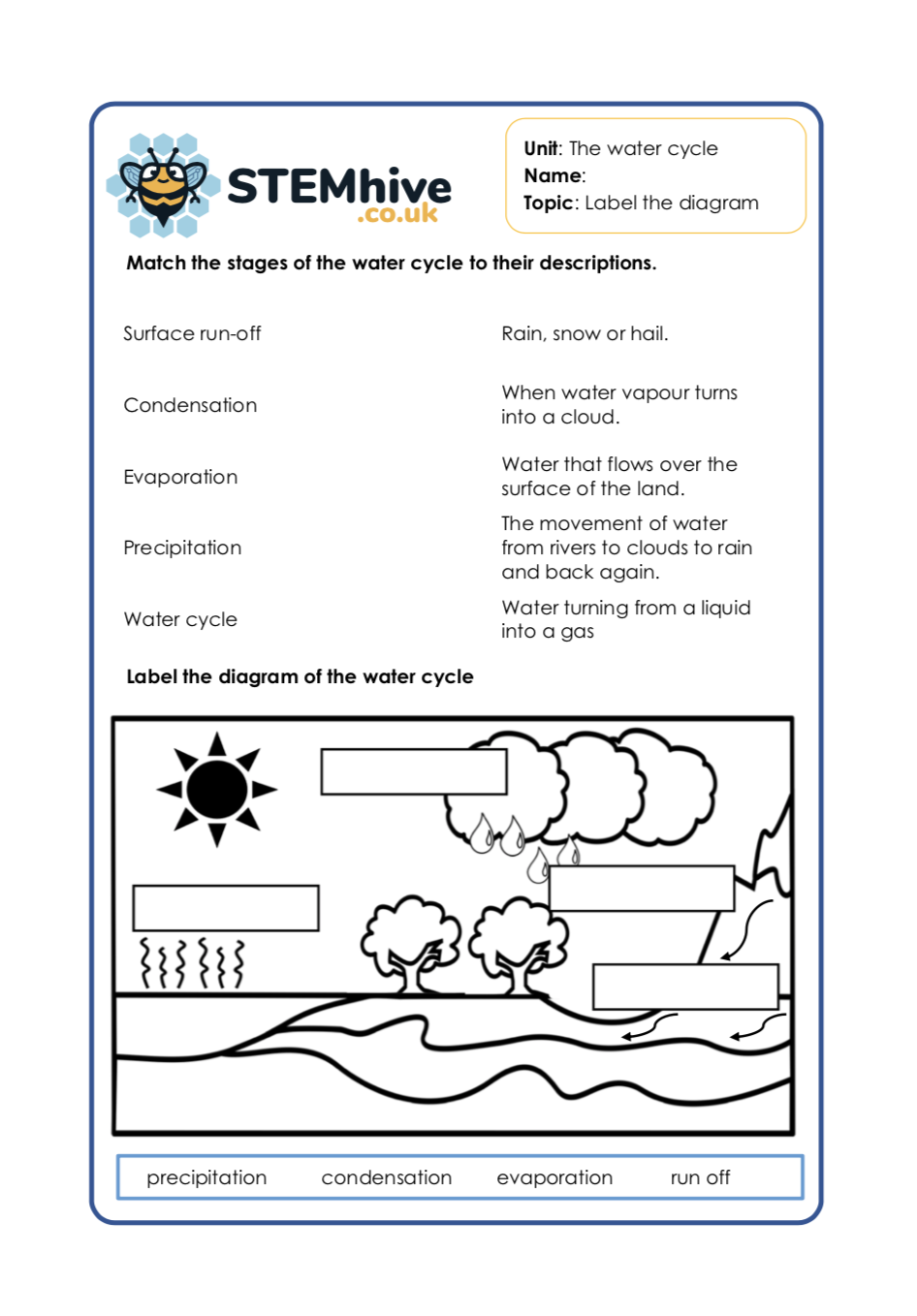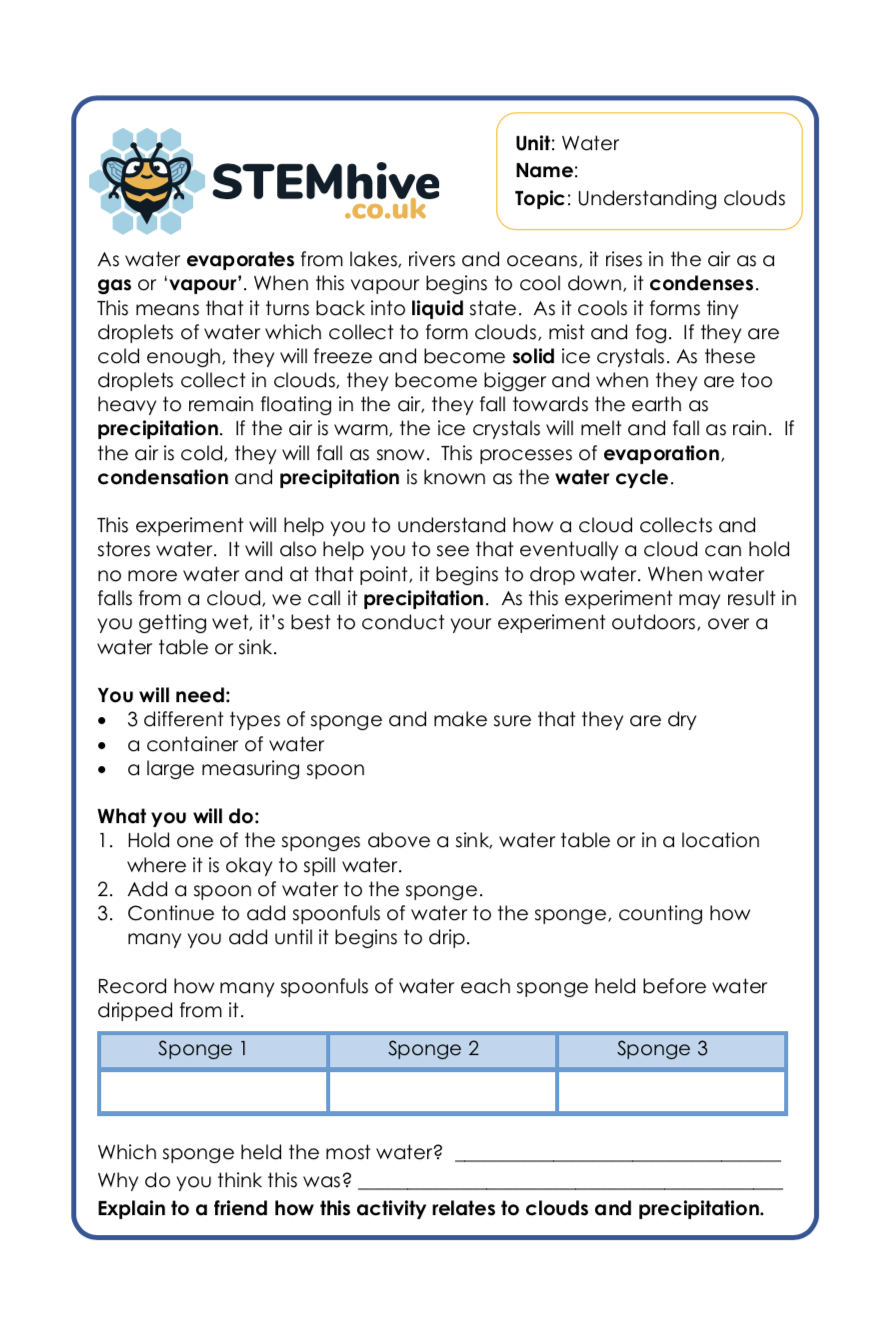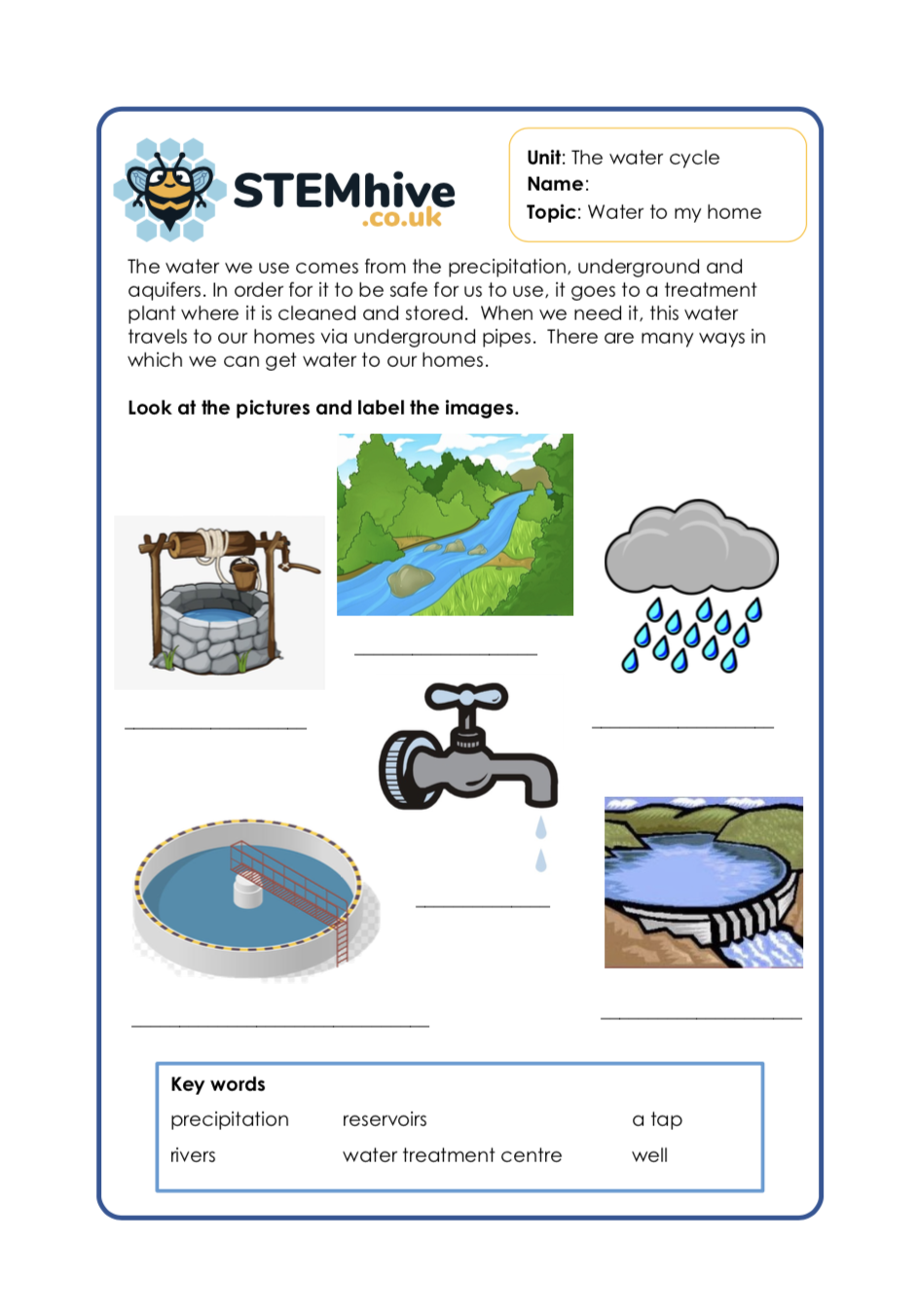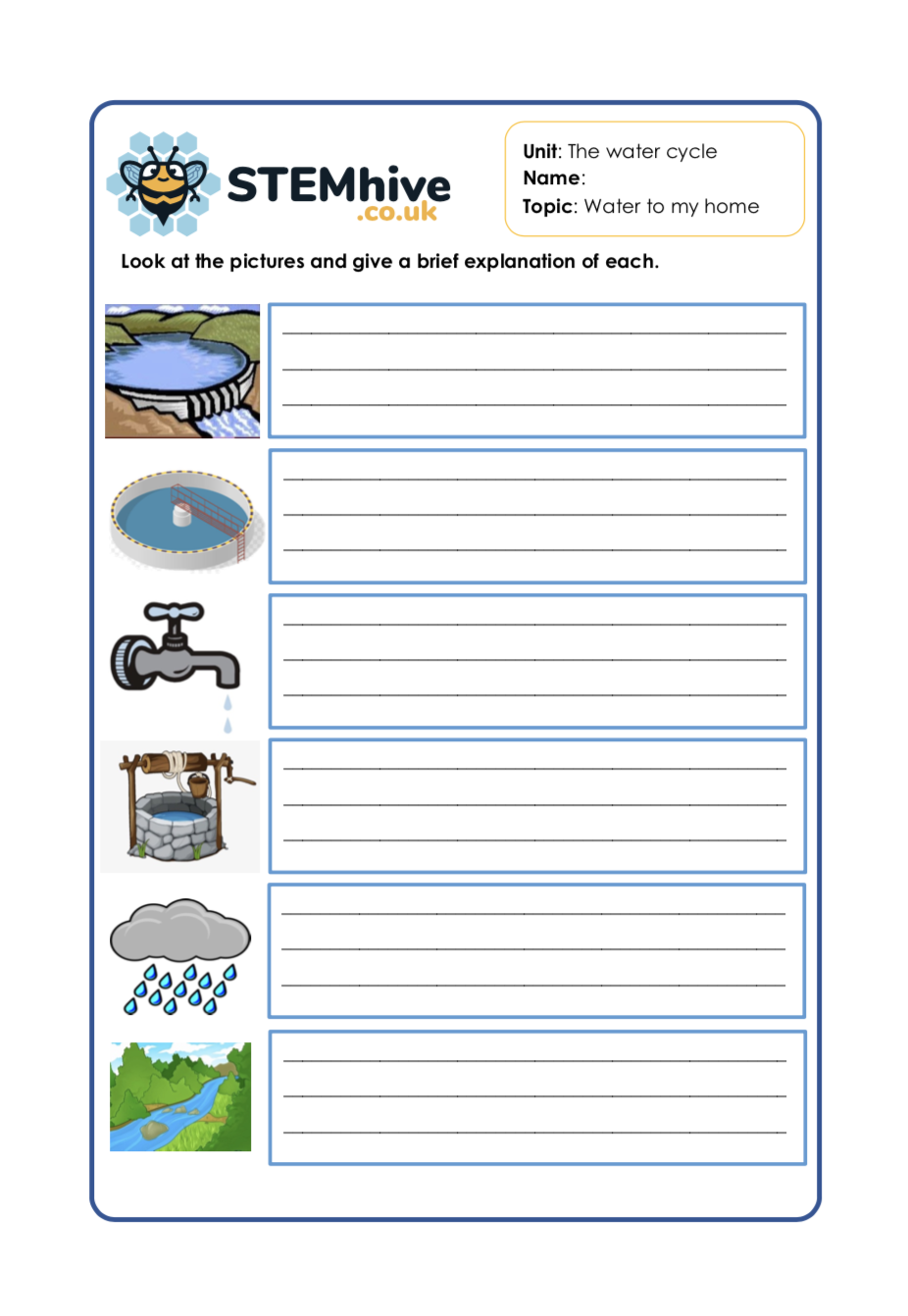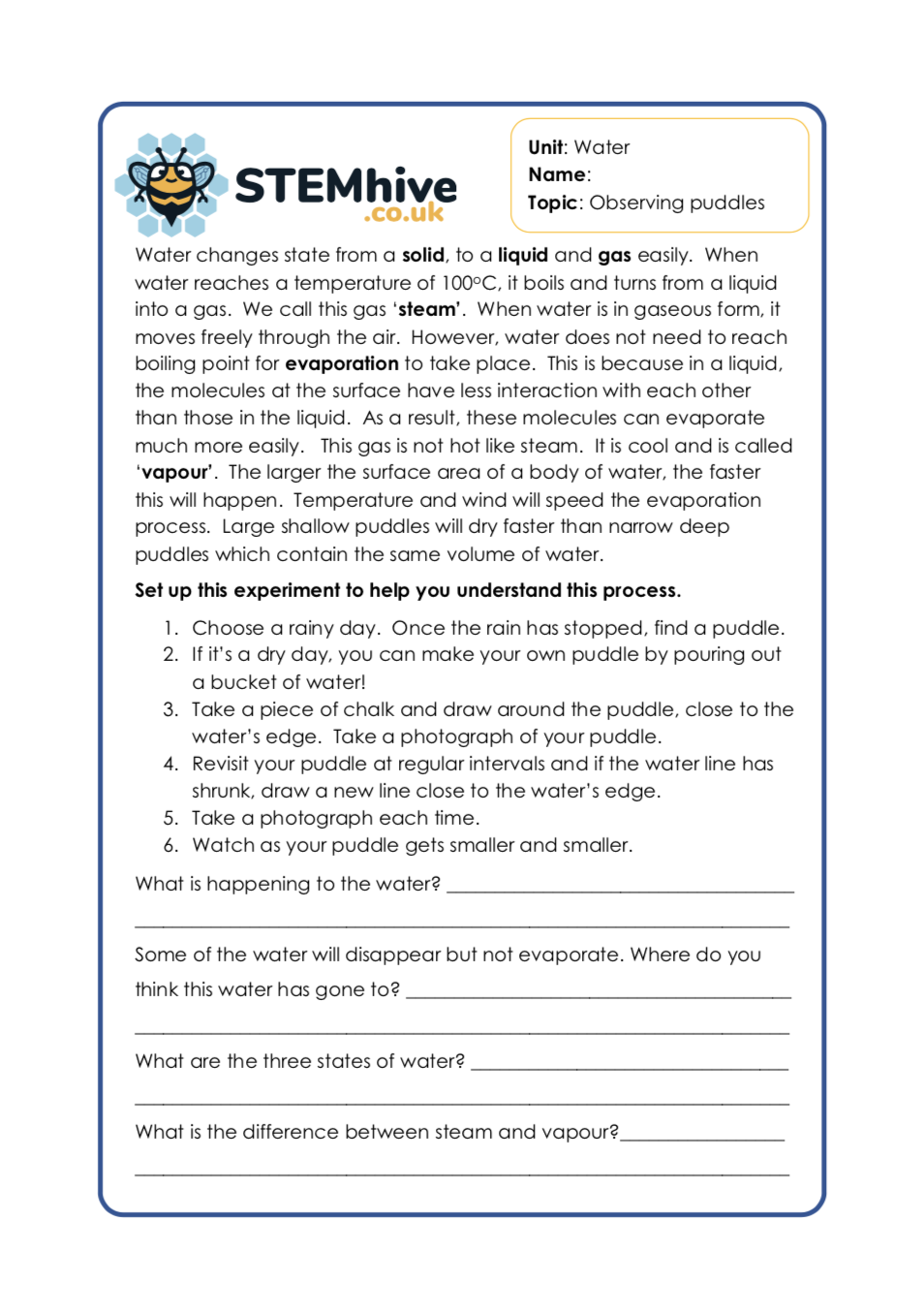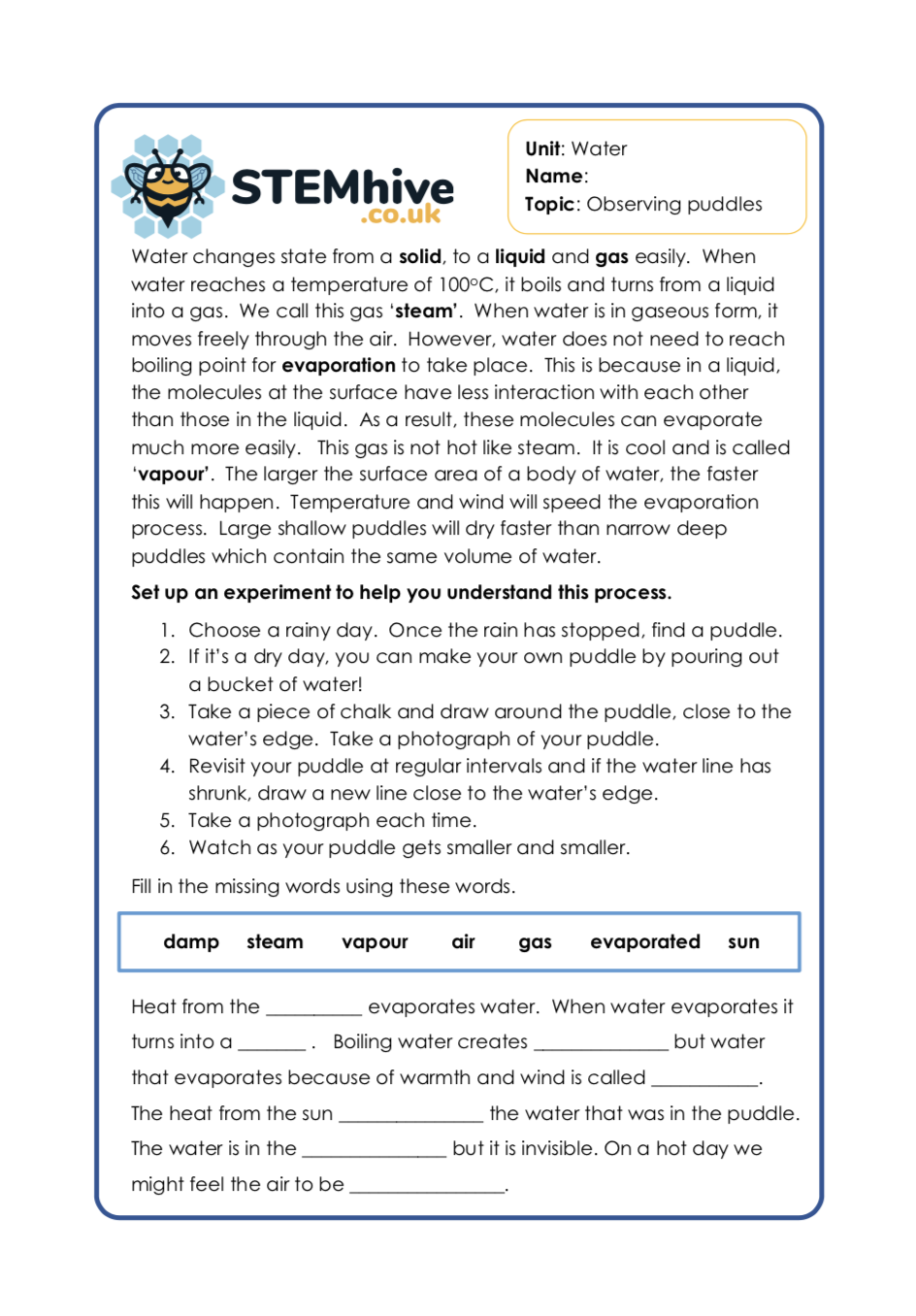Water
Main Focus: Explain the Water Cycle
The water cycle is the continual movement of water. From the ground to the sea, to the sky, and back to the ground again.
In this science activity, your class will use the diagram and key words to explain the water cycle, read the information and answer the questions, or sequence the events of the water cycle in order and label the diagram with key words: Evaporation, transpiration, condensation and precipitation.
This activity is aimed at children aged 7-9, Year 3 / Year 4 / LKS2.
Unlock ResourceMain Focus: The Story of the Water Cycle
In this activity, your class will explore and sequence the events of the water cycle.
Unlock ResourceMain Focus: The Water Cycle and Meanings
In this activity, your class will explain the stages of the water cycle or match the key terms to meanings.
Your class have also the opportunity to draw their own water cycle diagram and label it too.
Unlock ResourceMain Focus: Sponge Experiment - Understanding Clouds
This experiment will help your class to understand how a cloud collects and stores water. It will also help them to see that eventually a cloud can hold no more water and at that point, it begins to drop water. When water falls from a cloud, we call it precipitation. As this experiment may result in your class getting wet, it’s best to conduct the experiment outdoors, over a water table or sink.
Main Focus: Water to my Home
The water we use comes from the precipitation, underground and aquifers. In order for it to be safe for us to use, it goes to a treatment plant where it is cleaned and stored. When we need it, this water travels to our homes via underground pipes. There are many ways in which we can get water to our homes.
Your class will also look at each picture and write a brief explanation about each and their roles/uses.
Main Focus: Puddles Experiment
Water changes state from a solid, to a liquid and gas easily. When water reaches a temperature of 100oC, it boils and turns from a liquid into a gas. We call this gas ‘steam’. When water is in gaseous form, it moves freely through the air. However, water does not need to reach boiling point for evaporation to take place.
In this activity, your class will set up an experiment to help them see and understand this process.

